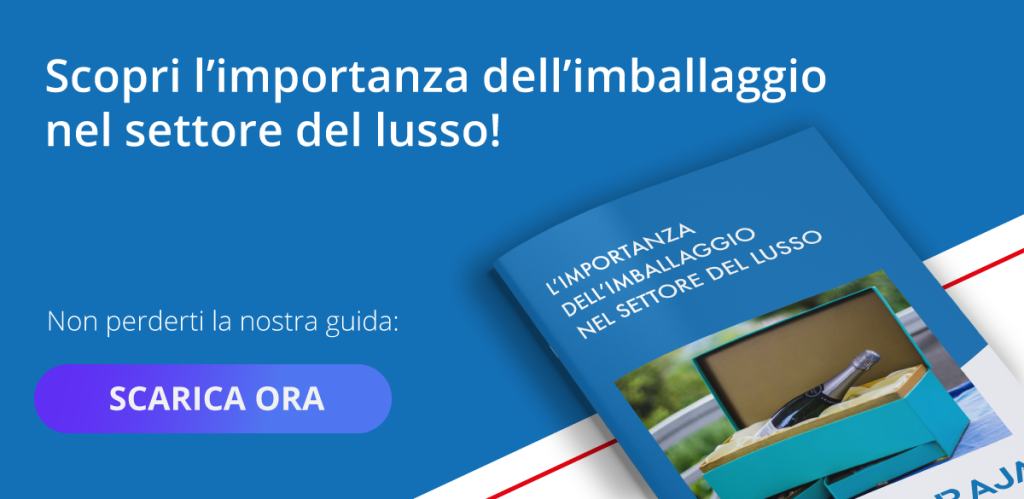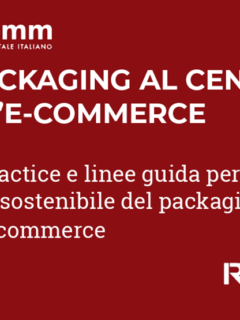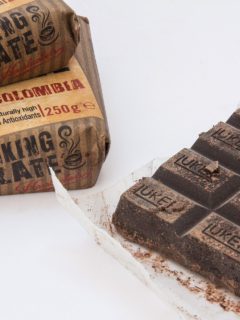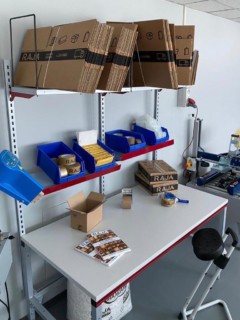Choosing the right type of packaging is a strategic factor for any company. Not only does it protect products and optimise storage costs, it also represents an important opportunity to convey brand image.
However, not all packaging is the same: there are primary packaging, secondary packaging e tertiary packaging, each of which performs specific functions.
How is packaging classified?
The packaging are classified into three categories main categories, defined by Directive 94/62 EC of 20 December 1994 which aims to reduce the environmental impact of packaging:
- Primary packagingThis is the level of packaging that comes into direct contact with the product. Its function is to protect and preserve it, while also ensuring compliance with labelling regulations. Common examples include bottles, cans, blisters and food wrappers.
- Secondary packagingDesigned to contain multiple sales units or primary packaging, this packaging facilitates handling and transport, as well as serving as a branding tool. cardboard boxes, pouches, bags, multipacks and shelf displays fall into this category.
- Tertiary packagingare used to group and consolidate secondary packaging for transport and storage. Examples include pallets, stretch film and strapping to ensure load stability.
This classification not only facilitates the management of materials along the production and logistics chain, but also supports the proper separation and recycling of materials.
What is primary packaging?
L’primary packaging is the first level of protection for the product, the one that comes into direct contact with it and guarantees its integrity. The choice of material is very important for food packagingpharmaceuticals or cosmetics, as it must provide a barrier against dust, moisture, bacteria and other external agents.
Functions of primary packaging
- Product safety: protects against impact, contamination and alteration caused by light, air or extreme temperatures.
- Identification and information: must carry essential data such as product name, ingredients, expiry date, batch number and instructions for use, ensuring compliance with labelling regulations.
- Attractiveness: In the retail context, primary packaging must also capture the customer’s attention, often incorporating branding elements such as logos and eye-catching graphics.
Preferred materials
The primary packaging include materials such as food-grade plastic, glass, aluminium and cardboard, selected according to the nature of the product and its storage needs.
What is secondary packaging?
The secondary packaging is designed to contain more sales units or primary packaging. This type of packaging optimises logistics management, facilitates transport and offers an additional surface area ideal for communicating the brand.
Main functions of secondary packaging
- Space optimisation: thanks to stackable and palletisable designs, secondary packaging reduces storage and transport costs.
- Branding: Often decorated with logos or graphics, it enhances the customer experience and reinforces the visual identity of the company.
- Additional protection: ensures that products reach the customer in perfect condition, reducing the risk of damage during handling.
Preferred materials
The secondary packaging may include corrugated cartons, recycled plastic or eco-friendly packagingsuch as compostable materials, which are increasingly in demand among sustainability-conscious consumers.
What is tertiary packaging?
L’tertiary packaging is the third level of protection and is used to group secondary packaging, making transport and storage more efficient. It is crucial for handling large quantities of goods in a safe and stable manner.
Main functions of tertiary packaging
- Load consolidation: Tools such as pallets and straps ensure that secondary packaging is securely positioned, preventing shifting during transport.
- Logistical efficiency: thanks to solutions such as stretch film or straps, tertiary packaging facilitates handling and minimises damage from shock or vibration.
- Sustainability: Recyclable materials, such as compostable films or polypropylene straps, can reduce environmental impact, supporting corporate sustainability strategies.
Common examples of tertiary packaging
- Pallet: essential for stabilising and transporting large quantities of products.
- Stretch film: wraps loads to protect them and keep them stable.
- Holds: ensures that boxes on pallets remain compact and secure during transport.
The new European packaging regulations (2024)
The European Parliament has approved in 2024 of the new rules to make packaging more sustainable, promoting a circular economy and reducing waste across the EU. These rules include progressive targets to reduce packaging waste, such as a decrease of 5% by 2030, 10% by 2035 and 15% by 2040.
The new regulations also aim to encourage reuseby introducing specific obligations for certain sectors, and to improve recyclingby establishing criteria for the use of recyclable materials. For example, single-use plastic products and packaging made of materials that are difficult to separate will be subject to stricter restrictions.
These changes are an important step towards sustainability, aligning the industry with the EU climate goals.
Why is it important to choose the right type of packaging?
Each type of packaging has a specific role in protecting, handling and promoting products. Understanding the types of packaging and selecting the most suitable materials and solutions for your needs can make all the difference in terms of cost, efficiency and sustainability.
If you would like support in the selection of your packaging or individual advice, RAJA is your ideal partner. Discover our solutions for secondary packaging e tertiary packagingdesigned to meet every need, from e-commerce to the food industry.
Choosing the right type of packaging represents a strategic element in protecting products, optimising logistical processes and enhancing your brand. With the introduction of new European regulations, move towards sustainable solutions becomes a priority to reduce waste, promote the reuse and improve recycling.
Adopt efficient and innovative packaging is not only a response to regulatory requirements, but also an opportunity to strengthen the relationship with the increasingly environmentally conscious consumer. With RAJA you can count on tailor-made solutionsdesigned to ensure efficiency, safety and sustainabilityregardless of your industry.
Investing in well-designed packaging is not just a detail: it is a step towards improving your processes and your environmental impact, turning it into a real competitive advantage.















